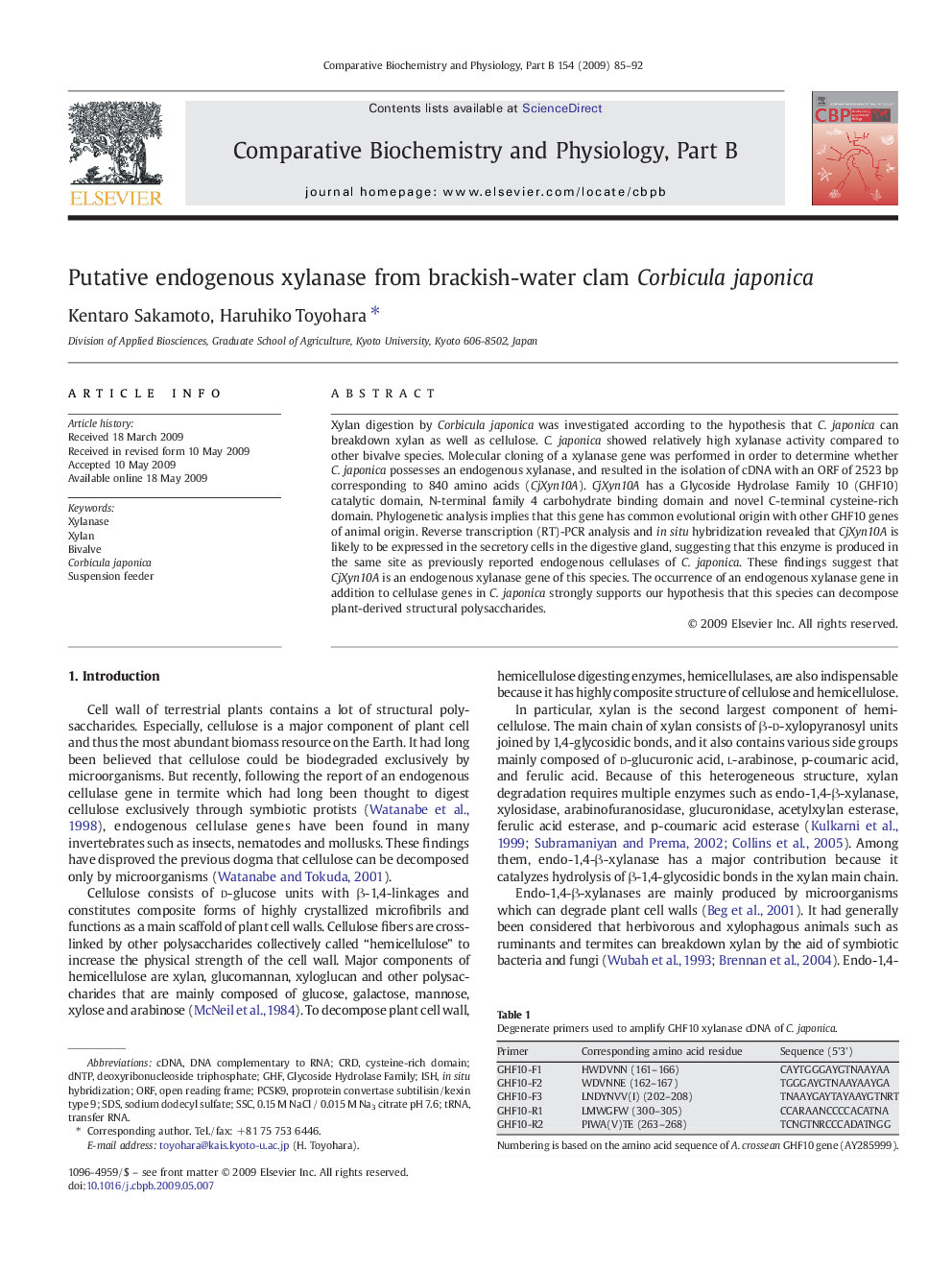| Article ID | Journal | Published Year | Pages | File Type |
|---|---|---|---|---|
| 1975820 | Comparative Biochemistry and Physiology Part B: Biochemistry and Molecular Biology | 2009 | 8 Pages |
Xylan digestion by Corbicula japonica was investigated according to the hypothesis that C. japonica can breakdown xylan as well as cellulose. C. japonica showed relatively high xylanase activity compared to other bivalve species. Molecular cloning of a xylanase gene was performed in order to determine whether C. japonica possesses an endogenous xylanase, and resulted in the isolation of cDNA with an ORF of 2523 bp corresponding to 840 amino acids (CjXyn10A). CjXyn10A has a Glycoside Hydrolase Family 10 (GHF10) catalytic domain, N-terminal family 4 carbohydrate binding domain and novel C-terminal cysteine-rich domain. Phylogenetic analysis implies that this gene has common evolutional origin with other GHF10 genes of animal origin. Reverse transcription (RT)-PCR analysis and in situ hybridization revealed that CjXyn10A is likely to be expressed in the secretory cells in the digestive gland, suggesting that this enzyme is produced in the same site as previously reported endogenous cellulases of C. japonica. These findings suggest that CjXyn10A is an endogenous xylanase gene of this species. The occurrence of an endogenous xylanase gene in addition to cellulase genes in C. japonica strongly supports our hypothesis that this species can decompose plant-derived structural polysaccharides.
